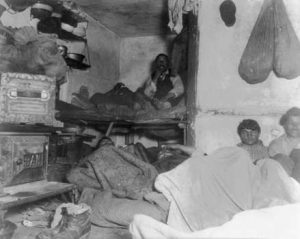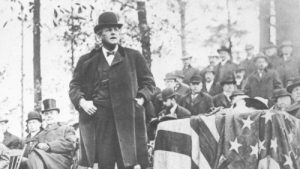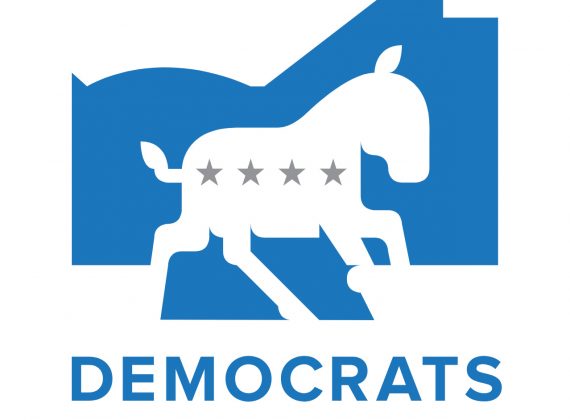
You may have to suspend disbelief, but Cleveland was once ground zero, and a national model, for a major political/social reform movement within this country. Today, the heart of the matter is whether Cleveland can once again call itself a progressive bastion and establish better governmental, economic, and political outcomes for its citizens and the region as a whole.
Progressivism was by no means a one-issue movement. Historians have long pointed out that there wasn’t exactly a coherent belief system or organizational structure whereby all Progressives adopted the same or even similar beliefs and goals. It was more of what I’ll call an “impulse for reform” in one area or another, in the wake of corporate, civic, and economic abuses and conditions running from late in the 19th century to the beginning of America’s involvement in World War I.
During this time, some people and groups focused their reform efforts on a singular issue, such as those seeking labor and consumer protections in the wake of Upton Sinlcair’s The Jungle; or ending the monopolistic abuses of companies like John D. Rockefeller’s Standard Oil; those seeking more equality for blacks in creating the NAACP; or the abhorrent and sickly living conditions endured by many (1st & 2nd generation immigrants) living in our nation’s cities as depicted by photographer Jacob Riis.
In short, the Progressive era was a period of multiple, moralistic reform efforts tackling divergent topics like women’s suffrage, child and labor law protections, poverty, corporate malfeasance, political corruption, a progressive income tax, urban decay, and other sundry topics.

Here in Cleveland, men like Tom Johnson, Newton D. Baker, Peter Witt, and Frederic Howe, among others, spearheaded a dynamic civic period bursting with often unbridled energy as they sought to reform the way the city was run and how its people were governed and treated.

So, what was accomplished in Cleveland during this era and how was it done? Well no man was more instrumental in spreading the Progressive impulse here, and possibly nationally, than Mayor Tom L. Johnson (1901-09).
As mayor, Johnson took on monopolistic entities like the Cleveland Electric Illuminating Company (or CEI) while try to gain municipal control of the city’s utilities to prevent corporate abuses. Of course, CEI wasn’t about to roll over. As Johnson sought City Council support for an effort to buy CEI, he ran headfirst into the corporation’s ability to wield massive influence over the city’s council members. (Corporate interests impacting Cleveland’s elected leaders!? I wonder what current Council President Kevin Kelley would say about that)? Eventually Johnson did an end-around CEI by helping to create a rival electric company that was owned by the people that eventually became the famous, or infamous, Muny Light.
Perhaps Johnson’s most tumultuous and longest-running battle as mayor was his crusade for the 3-cent fare. He sought to lower the exploitative streetcar company’s fare from 5 cents to 3 cents. In an era before cars, and when 2 cents meant something to a person who earned maybe $500/year, Johnson aimed to empower those who used our public transportation system. (Unfortunately, this is something RTA misses out on when it stacks its board with members who presumably never ride a bus and rarely ride our trains).
In addition, Johnson was a driving force in the city’s Group Plan to establish the Malls at Public Square and give residents green space within the often-dark urban milieu. He reformed the police and fire departments into some of the nation’s best and most efficient; established municipally-run refuse and street cleaning crews in an era of tenements and disease; instituted more transparency in government during the period of political bosses and machines, best exemplified by his heavily-attended tent meetings.
Johnson also set-out to establish the principle of Home Rule for Cleveland and other municipalities while serving as mayor. The idea behind Home Rule is that a city shall control its own laws and ordinances unimpeded by state influence. Yet, just as Johnson was stymied by conservative business interests in much of his reform pursuits here, the Ohio state legislature (controlled not surprisingly by conservative business interests) rebelled against Johnson’s efforts and sought to prevent some of what he pursued. Thankfully this doesn’t happen anymore. No, wait it does. One only has to look at the Ohio General Assembly’s intervention in Cuyahoga County’s recent tackling of the paper bag issue.

Newton D. Baker would eventually follow in the shoes of his mentor Tom Johnson and serve as mayor from 1912-1915 before progressive Democratic president Woodrow Wilson tapped him to be Secretary of War during World War I. Having served as city solicitor under Johnson and studying at his feet, it was under Baker that Johnson’s push for municipal ownership of the streetcars came to fruition, with the brilliant stewardship of this effort by Baker. It was also under Baker that Cleveland Municipal Light, originated by Mayor Johnson, started its services and began to offer cheaper electricity to city inhabitants and served as a municipally-owned counterweight to CEI. Additionally, it was Baker the technician who spearheaded the Home Rule amendment to the Ohio constitution that was passed by state voters in 1912. At last, Johnson’s efforts to prevent monopolistic corporations from controlling the city’s inhabitants was bearing fruit.

The goings-on in Cleveland made national news and helped propel Progressivism to other cities and further spread this impulse throughout the nation, as might best be seen in the presidential election of 1912. That year saw the high water point for so-called left-of-center political parties in our nation’s history with the victorious Democrat Woodrow Wilson, Progressive Theodore Roosevelt, and Socialist Eugene V. Debs combining for an astounding 75% of the vote. Oh, those golden days.
Reform in our city and county is as starkly needed today as it was in 1901. Our public transit system is once-again a mess. The Cleveland Division of Police, though filled with some extraordinary members, is the opposite of a national model of efficiency. The type of transparency and anti-cronyism that men like Johnson and Baker upheld, is a most pressing matter when it comes to the city’s governing class. And lastly, where are the elected leaders with a true vision for a future Cleveland?
So, are similar battles still being waged in our city? And does Cleveland need another progressive era? That would depend upon your view of the first lines Johnson penned in his autobiography. “The greatest movement in the world today may be characterized as the struggle of the people against Privilege.” Re-dedicating ourselves to this struggle, in some form, must be our city’s goal. And probably our nation’s too.
How can we do that? Coming soon…
To learn more about Tom Johnson and Newton Baker, particularly as it pertains to their Cleveland careers, below are two exemplary, and relatively brief, documentaries.




